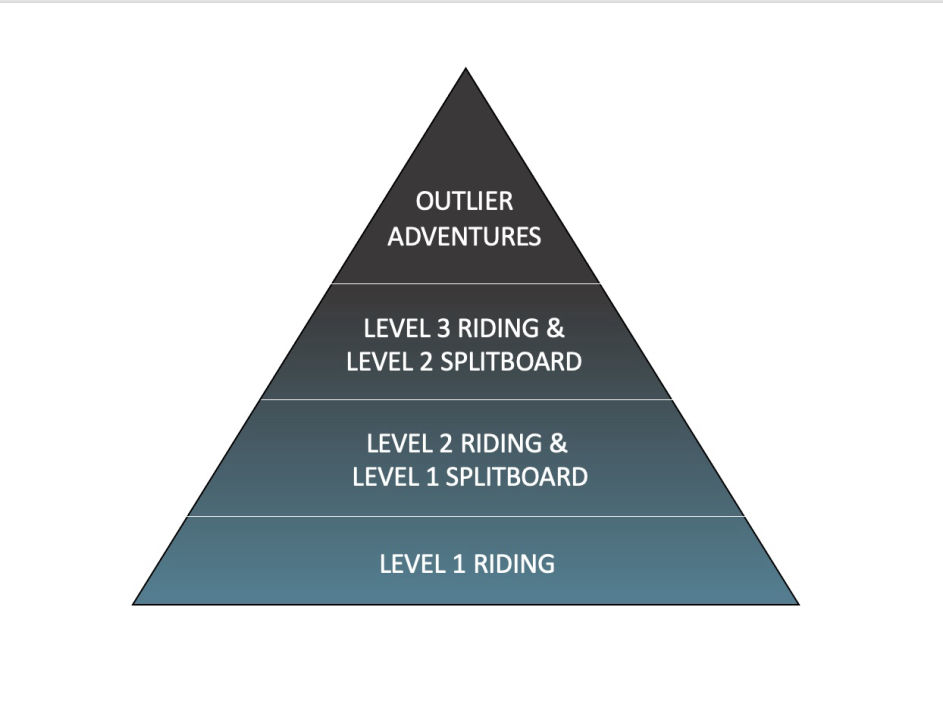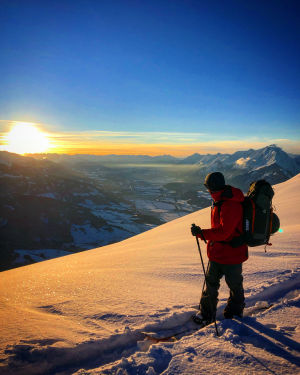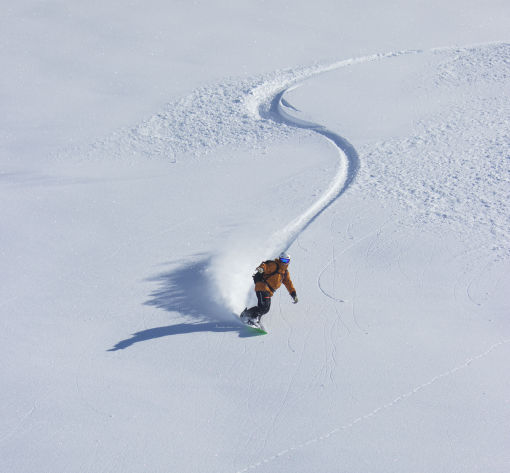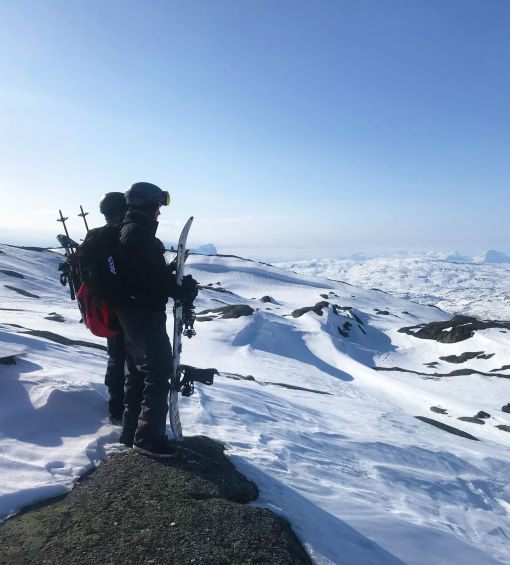
To enable riders to make more informed decisions on what course is suitable for them we've developed a simple skill level indicator. If you have any questions on the levels feel free to contact us directly for more information.

To enable riders to make more informed decisions on what course is suitable for them we've developed a simple skill level indicator. If you have any questions on the levels feel free to contact us directly for more information.

If the idea of adventuring away from the crowds and starting to explore beyond the confines of the resort is starting to appeal then this is the level for you.
It's about building awareness the basics of backcountry safety and starting to understand how to move efficiently and effectively on a splitboard. The pressure is off as you work in within a small crew exploring some cool out of bounds areas.

It's time to move away from the crowds and take on a fresh challenge. Now that the basics of off-piste riding and safety are in place it's time to consolidate that learning.
More extensive safety training becomes essential as you look to venture further afield. You'll be learning the basics of tour planning and on slope route selection with basic navigation in the mountains.
The more you learn the more you realise this journey is a long and rewarding one as you step into the rarefied air of off piste exploration. Tough days and long nights are ahead and you look to be physically and mentally challenged.

Special adventure courses created for riders looking to build on the foundations of the Level 2 splitboard or other high-level courses.
Each participant will be playing an active role in planning and execution of splitboard missions in close co-operation with their guide. It will encompass route planning, weather analysis, snow pack assessment, on-site safety evaluation, map reading, and route selection with additional first-aid and safety protocols within more challenging high alpine environments.